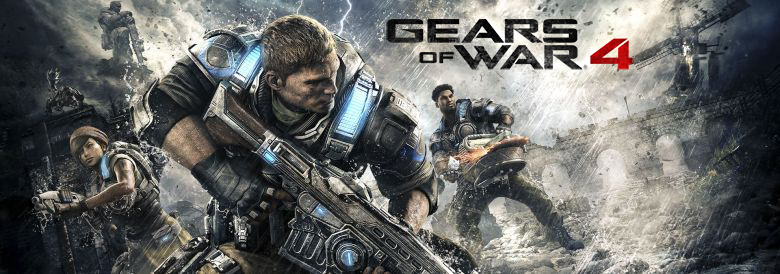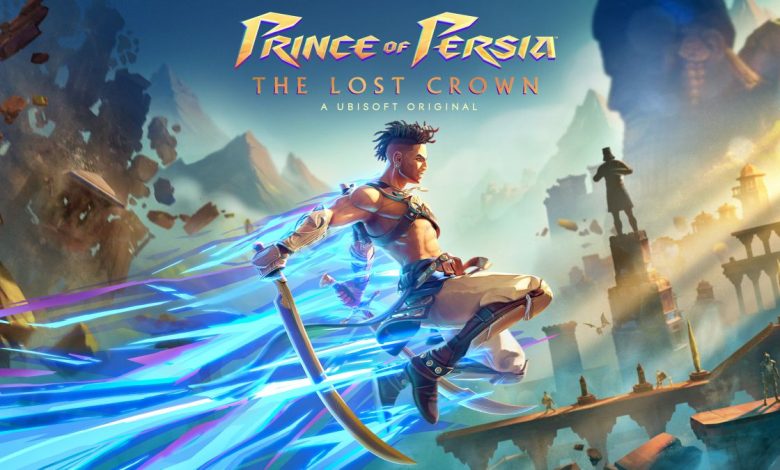
One of the longest-running and most notable series in gaming is, without a doubt, Prince of Persia. First as creator Jordan Mechner's vision, realised in 1989 and still holding the record for most ports to this day, and then with his amazing Sands of Time trilogy, which breathed new life into 3D action games. However, Ubisoft, who owns the rights to the franchise, somewhere around 2010 and after Forgotten Sands, stopped working on... "Arabian Nights" and moved on to their spiritual successor called Assassin's Creed. The results of that decision are well known and very...profitable.
However, a few years ago, Ubisoft decided to renew the public's interest in the beloved Persian prince. On the one hand with a remaster/remake of Sands of Time, which of course we are still waiting for, and on the other hand with the announcement of the release of a 2D Metroidvania title, which in a way is a return to the roots of the series. We're talking about Prince of Persia The Lost Crown, which initially left mixed impressions, both because the announcement trailer didn't really show anything great and because Ubisoft's previous attempts to bring a successful 3D game to two dimensions, with the Assassin's Creed: Chronicles trilogy, were (to put it elegantly) hopelessly mediocre. However, playing Lost Crown proved us solemnly wrong, and we're duly pleased about that, because quite simply, the game is one of the best Metroidvania games we've played in recent years.
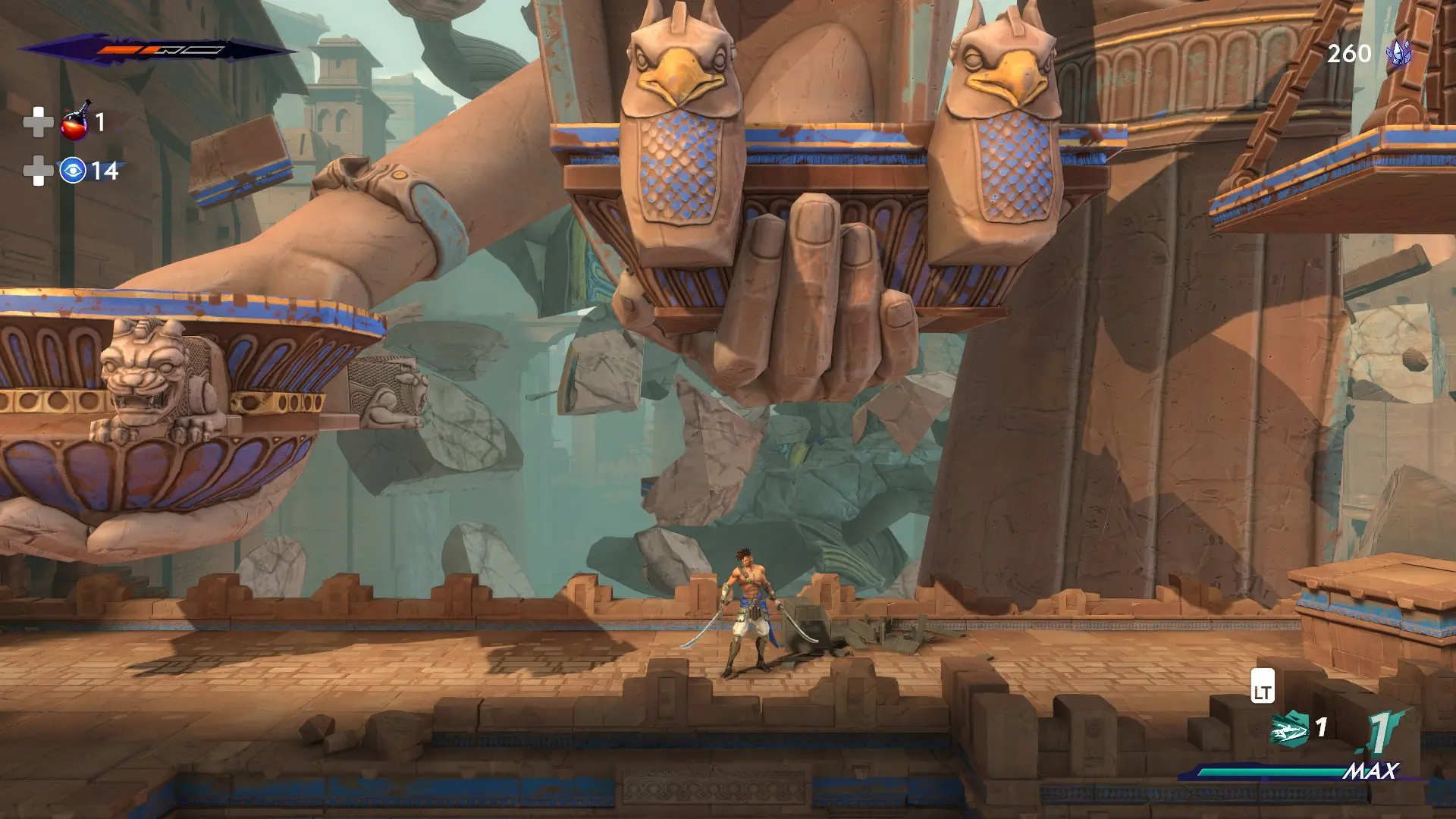
Maybe not so much in the storyline aspect, which is quite trivial and predictable, but this is something that doesn't bother the aspiring metroidvania player at all. In a nutshell, it places the protagonist of the story as Sargon, one of the seven Immortal warriors of Ancient Persia, who in the past have managed to fend off every possible threat to its integrity. But after their last, great, victory over the last army that dared to take them on, Prince Ghassan is kidnapped, with his captors taking him to the mysterious Mount Qaf. A place where time there has its own rules, and behind the kidnapping and its causes lie several secrets and betrayals.
Naturally, Sargon and the other six Immortals take it upon themselves to hunt down the kidnappers, but they have no idea what awaits them. At the very least, we get to experience it firsthand through the eyes of Sargon, an incredibly agile and dynamic warrior who wields two huge swords and (soon enough) a bow that are his best companions against the evils of Mount Qaf.
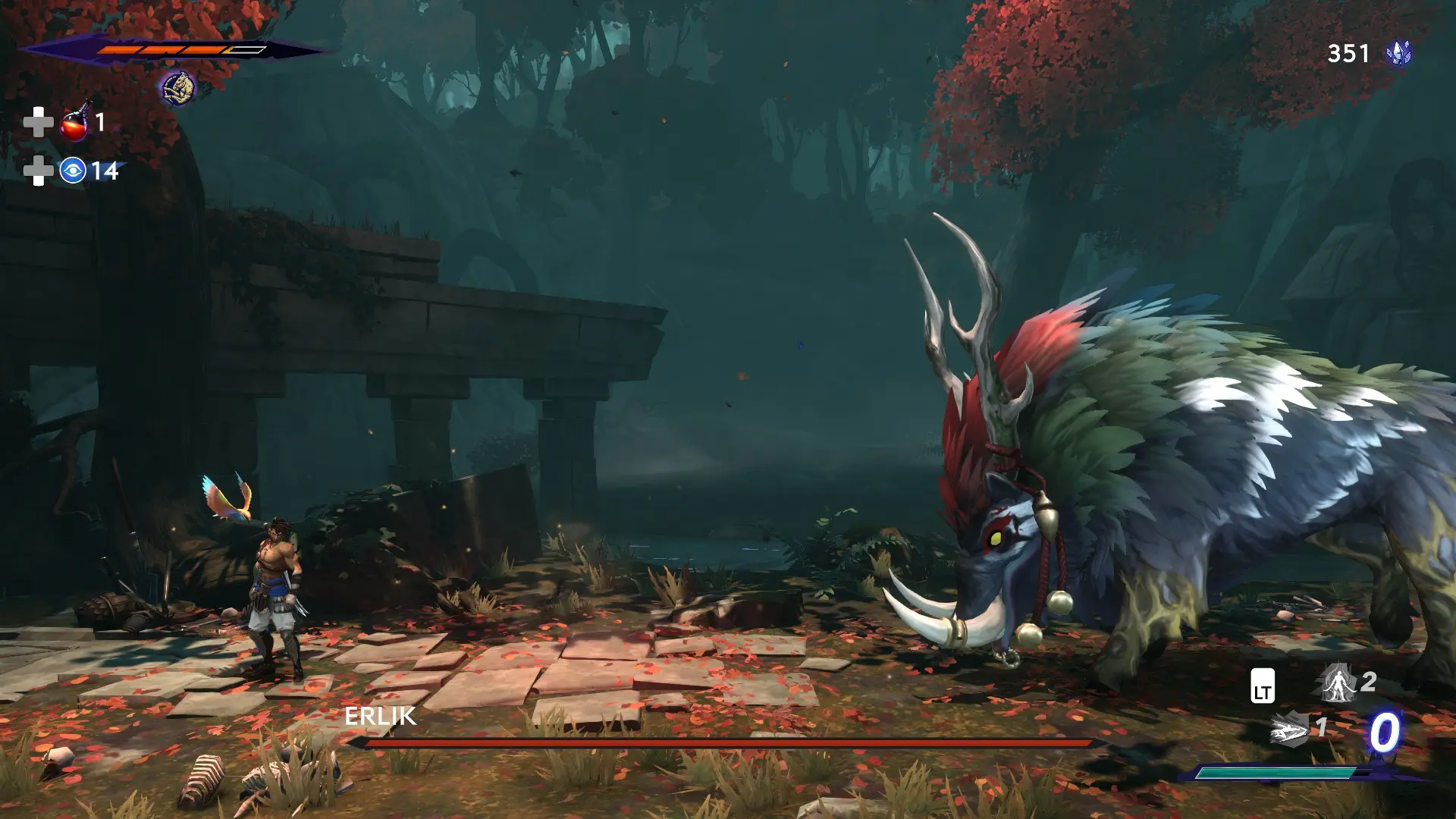
As a typical representative of the genre, Mount Qaf is a huge place, filled with environmental traps, all sorts of enemies and sizeable bosses, all of which are an increasing challenge to the player's reflexes. At first, things are pretty straightforward, with the map guiding us in almost a straight line, but at the same time we don't have access to many parts of it, which of course will be remedied later on by gaining the appropriate skill. For example, the addition of dash and double jump, which we can find in almost all metroidvania, while more special abilities such as creating a "copy" of the hero or the ability to switch between dimensions also exist. Nothing we've never seen before, however, these mechanics are so well integrated into the gameplay of the game that they make for an enjoyable experience.
This is aided by the entire design of Mount Qaf, which is masterful. Both on a environment level (we'll find ourselves in dungeons, deserts, tundras and even seas) and on a structural level, where the transition from one point to another is seamless and completely natural. We can say that the developers at Ubisoft Montreal have achieved a very good balance between challenge and exploration. Lost Crown is by no means easy as a game, but it's certainly fair enough: it undoubtedly features a couple of difficult to very difficult platforming points, sometimes combined with puzzles, but not sadistic enough to cause frustration, and a couple of secrets are included that will reward the player who engages with them. On the plus side of avoiding frustration, checkpoints are frequent, in the form of trees, which fully replenish Sargon's health and ammo (arrows), while fast travel points are fewer in number but strategically placed on the map.
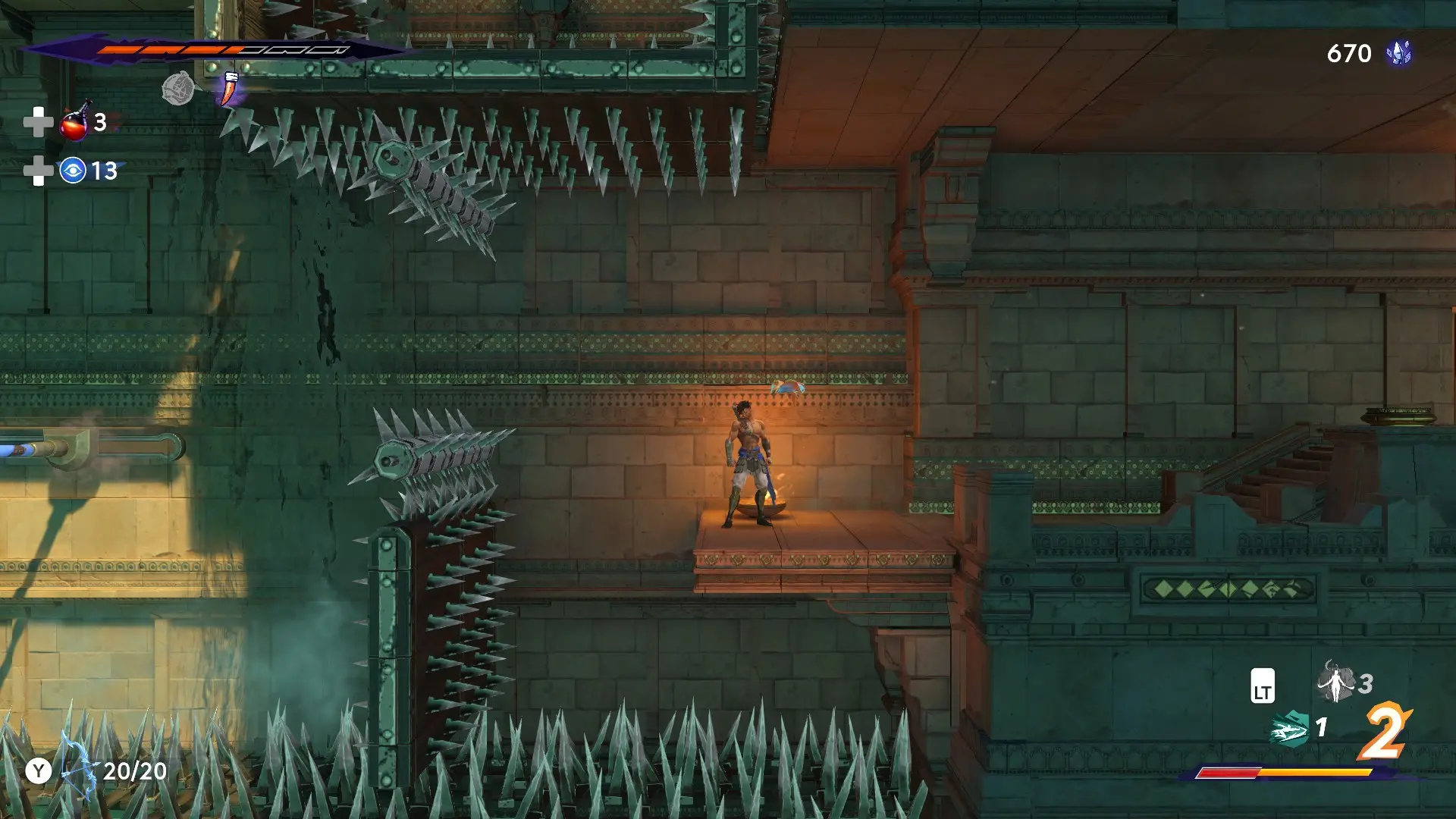
A map that is and is illustrated amazingly well, both because it's clear, accessible to the eye and in rich colours, far from any labyrinthine situations of other titles, and because there's an option to take screenshots to mark an important element we've spotted and visit it later. Really a very simple and so clever addition, perfect for those who want to scour 100% of the game, but for the rest of us we wouldn't say it changes anything to a huge degree. It depends of course on the difficulty level you're playing, plus the option to choose between exploration or guide mode, with the former leaving you completely stumped to find your steps, while the latter gives you a lot of help via icon markers on the map, but without taking you by the hand.
Besides that, there are some accessibility options to make the game even more accessible, which I personally didn't even touch, however there were (a few) moments in some battles where I thought to do so. The game's battles are not as crowded as one would expect, however they can be quite dangerous to Sargon's life if not given proper attention. They rely mostly on the dodge/parry/combo-attack trifecta, however several attacks from enemies are unpredictable or have odd timings, and some of them hit really hard. Of course, some aids exist, such as a yellow or red flash before a powerful hit, with yellow meaning parry and red meaning dodge, but again, if we're not careful, it's a matter of seconds to lose. At the very least, it's easy to dodge fights, something very useful if you're in the process of backtracking.
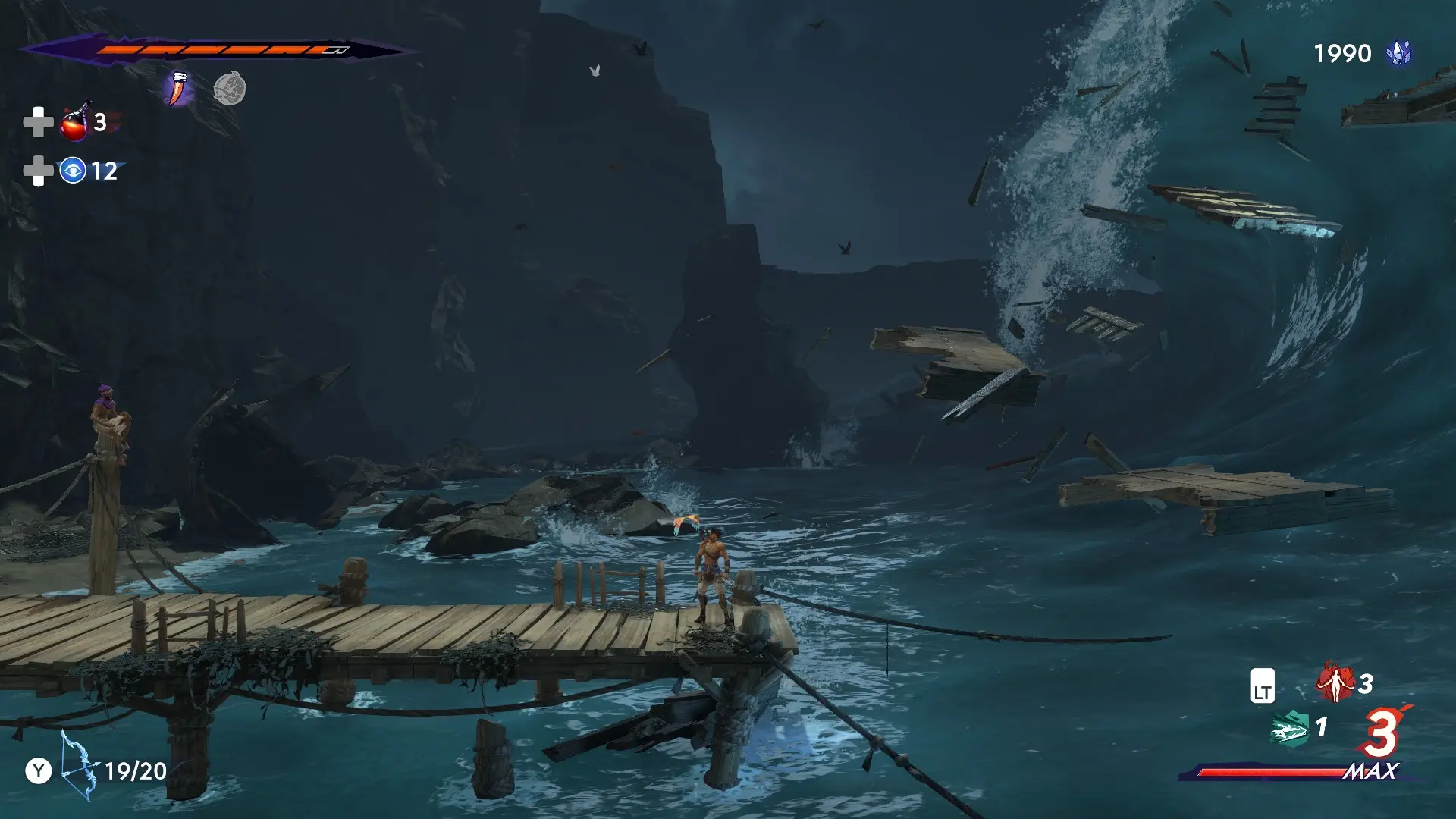
On the other hand, boss battles are mainly a process of memorizing patterns, but they can be very challenging and tough, especially if we haven't equipped Sargon with the right amulets. What are they? These are special items that we discover during the adventure (either given to us by following the campaign or we have to work hard to find them), which are placed around Sargon's neck and give him some extra abilities. What these are depends on us, our play style, and the challenge we face below.
For example, an amulet gives more athra with each parry, which in turn fills a bar that allows for the execution of powerful attacks (athra surges). These attacks are game-changer in bosses, so it's a good choice to wear it at a nearby checkpoint, as that's the only place to process them. There are over thirty amulets in the game to collect, and how many we can wear depends on the type of amulet and how many slots we have available (a parameter that increases, as you can see).
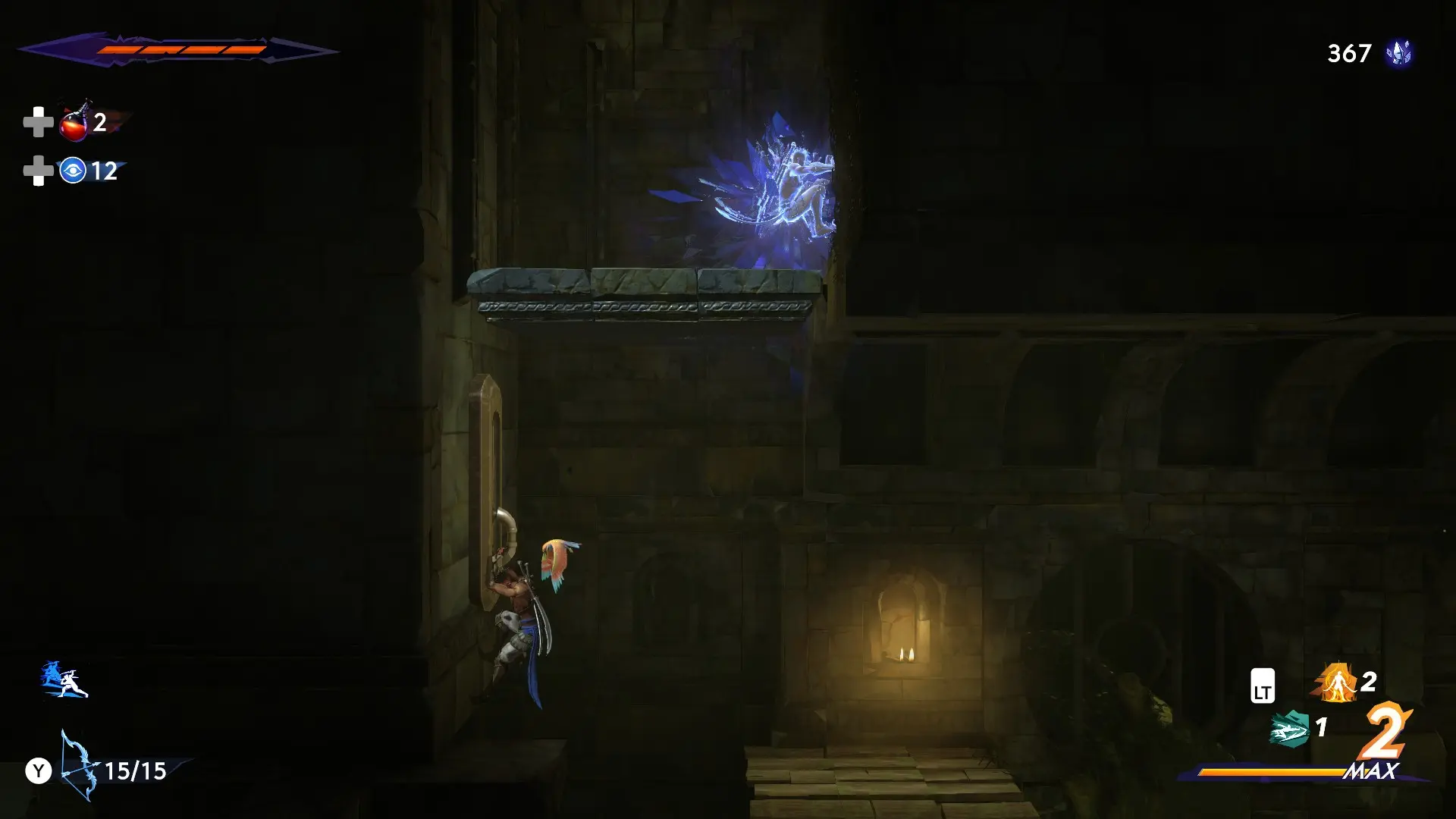
Therefore, if one wishes to discover everything that Lost Crown has to offer (including the collectibles and some side quests), it will take over 20 hours, which is not a small number. My save took 15 hours to complete the main story, along with two or three side quests, so you realize there's plenty of content for completionists.
On the technical aspect, Lost Crown is visually unimpressive, especially when the camera tries to get close-ups of the story's protagonists, reminiscent of pre-decade times. However, when the camera zooms out, the game is gorgeous, with excellent colour choices and the architecture of the environment often stealing the show, something you'll notice in the screenshots accompanying this review. In terms of the audio's approach, I was negatively impressed by the mediocre voice-over, which sometimes made you think that the actors had no idea what was happening on the screen when they said their lines, which is balanced out by the wonderful accompanying soundtrack.
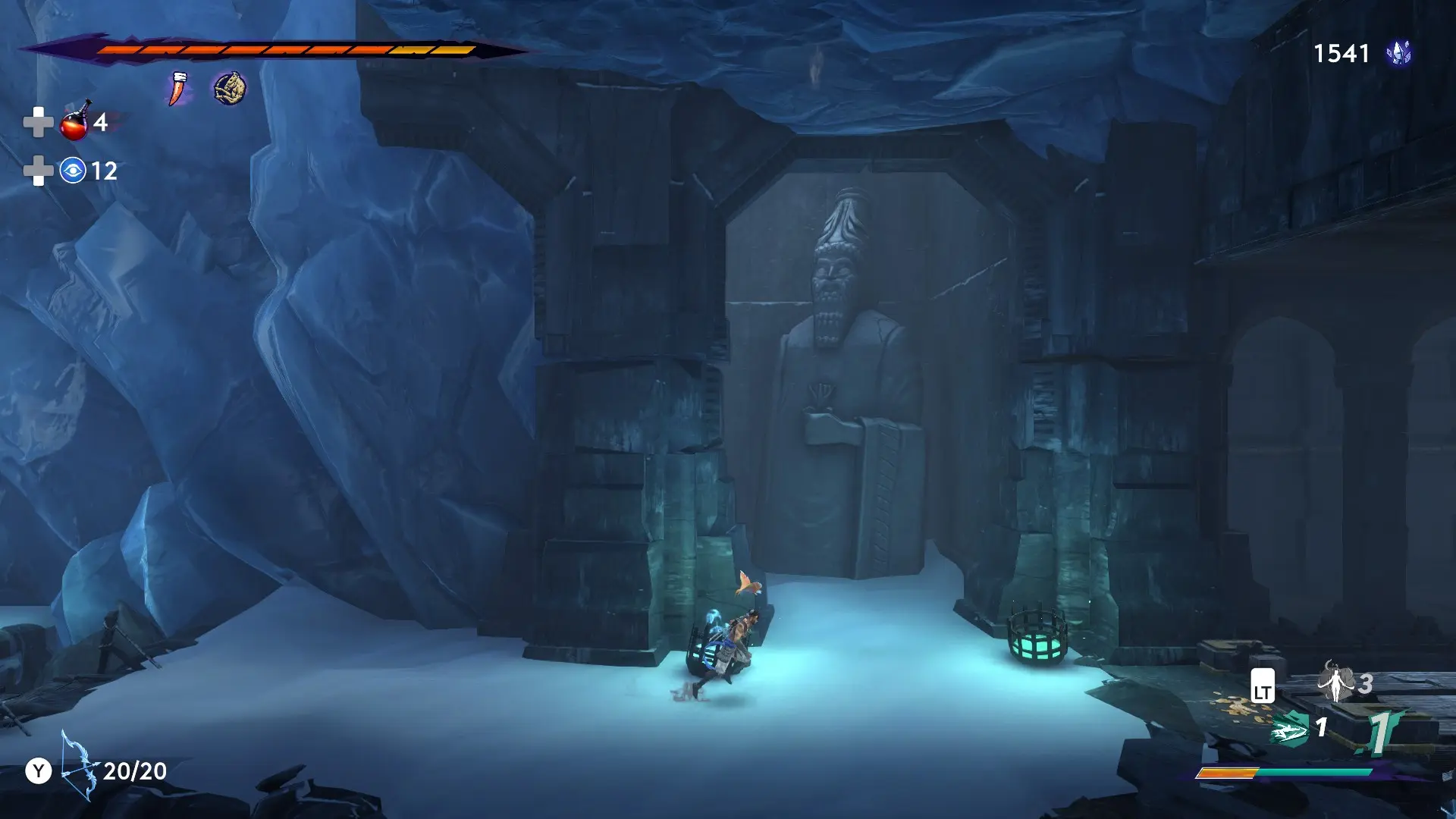
In short, Prince of Persia The Lost Crown is, perhaps surprisingly, a quality game from Ubisoft, which is highly recommended to all fans of the metroidvania sub-genre, but also to those who love the series. Sure, it's challenging as a game, which may put off a portion of players, but it's fun, clever, and at times, magical.
RANKING - 85%
85%
Timeless prince
Without innovating, Prince of Persia The Lost Crown is an excellent example of a quality Metroidvania representative.











